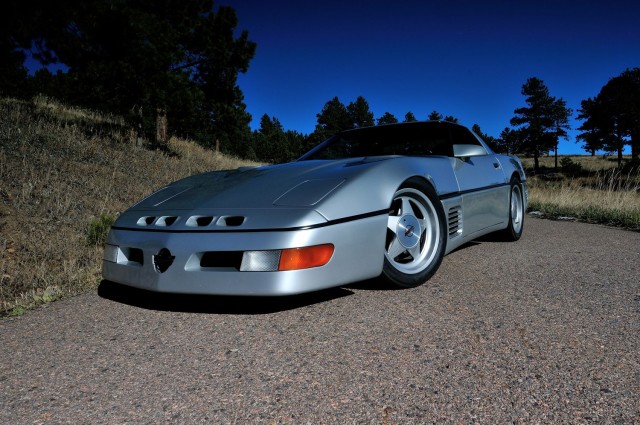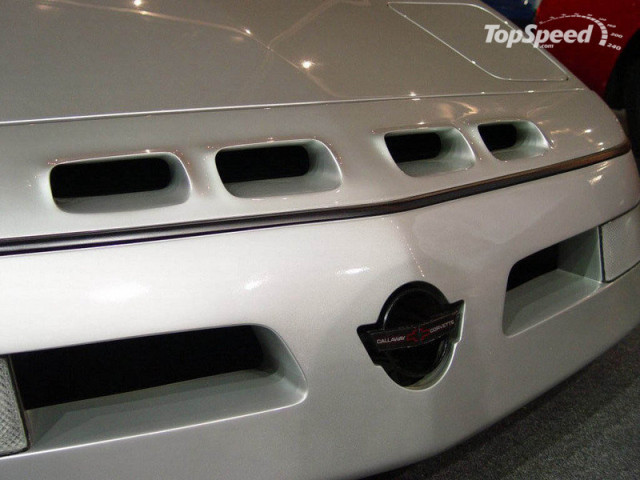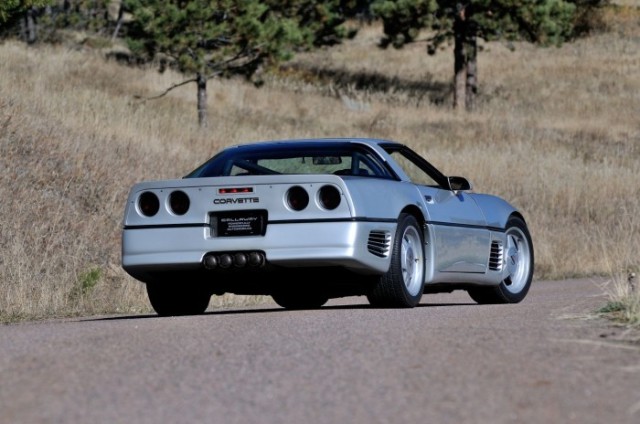 Many Corvette fans have at least heard of the Callaway Sledgehammer in their years of perusing Corvette news, and some were lucky enough to have seen it years ago in its glory days. With a resurgence of top speed record-setting cars and high-horsepower vehicles, we thought we should revisit the Sledgehammer of the 1980s and see how it stacks up against the famous “speed cars” of today, such as the Bugatti and McLaren.
Many Corvette fans have at least heard of the Callaway Sledgehammer in their years of perusing Corvette news, and some were lucky enough to have seen it years ago in its glory days. With a resurgence of top speed record-setting cars and high-horsepower vehicles, we thought we should revisit the Sledgehammer of the 1980s and see how it stacks up against the famous “speed cars” of today, such as the Bugatti and McLaren.
To see where the Sledgehammer ended up, we should start with how it all began. Ely Callaway is the man responsible for designing the “Big Bertha” golf club. For those who seldom leave the garage, it’s a driver used for hitting a golfball a couple hundred yards, generally from the tee box. While this may not have much in common with high-performance engines, we know the Callaways were a family of innovation and proponents of exploring technology.
Success Out Of Necessity
Ely Reeves Callaway III is the man you may be more familiar with, as he is the heart and soul behind the automotive side of the Callaway brand. While the name now resonates with technology, high performance, and Corvettes, this wasn’t always the case.
In 1973, Callaway found himself unable to continue his racing career, despite doing very well in Formula Vee and being voted one of the best of the new crop of SCCA racing drivers that year. Ultimately, racing is extremely expensive and he simply did not have the funding to continue.
 According to the Callaway Cars webpage, Callaway did what a lot of race car drivers do when their racing career stalls; he went to work as a driving instructor. Bob Bondurant hired Callaway for his racing school, where he became very familiar with the characteristics of the BMW 320i being used at the school. Callaway asked if he could temporarily take one of the school’s cars home, as be believed he could significantly increase the power.
According to the Callaway Cars webpage, Callaway did what a lot of race car drivers do when their racing career stalls; he went to work as a driving instructor. Bob Bondurant hired Callaway for his racing school, where he became very familiar with the characteristics of the BMW 320i being used at the school. Callaway asked if he could temporarily take one of the school’s cars home, as be believed he could significantly increase the power.
Through his years of racing, he picked up a lot of valuable skills which would come to serve his then-unplanned career. Callaway did receive an education from Amherst College with a BFA degree, which he was able to combine with his experience in engine building, machining, and chassis tuning.
His home garage in Old Lyme, Connecticut was the location for the development and birth of the first turbo kit for the BMW. Callaway has said, “I guess you could say I am the classic garage-to-industry case. I figured turbocharging could at least double the power of the cars at the time. The high-octane gas would help with things like manifold pressure, but those first turbochargers were rudimentary.”
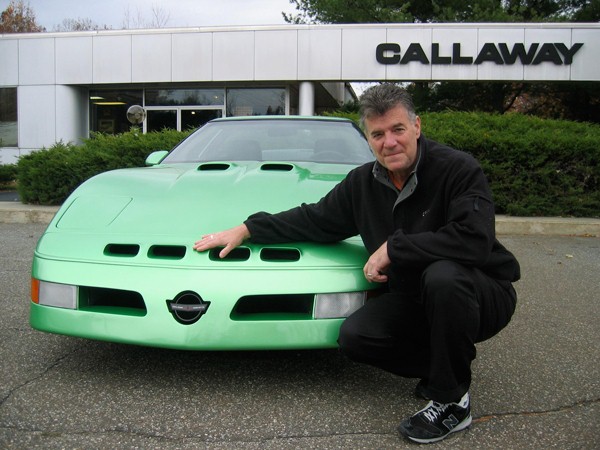 Callaway has gone on record saying that part of this early success was due to a friend in the publishing industry who was able to put the word out about the kits available for the BMW, to the extent of making it seem as thought they were capable of quickly producing thousands of orders. While this was certainly not the case, it may have helped to jump start his career, and we are glad that it did.
Callaway has gone on record saying that part of this early success was due to a friend in the publishing industry who was able to put the word out about the kits available for the BMW, to the extent of making it seem as thought they were capable of quickly producing thousands of orders. While this was certainly not the case, it may have helped to jump start his career, and we are glad that it did.
While BMWs were the beginning, we are here to learn about the Corvettes. In an interview with Hemmings, Callaway said, “We didn’t plan on the Corvette. We never even looked at a Corvette, but the Corvette was a different animal. It was one domestic car that had some real engineering, and the engines could withstand the twin-turbo setup. Once we looked at the Corvette, we liked it.”
From that point on, Callaway was able to create some very interesting projects using America’s sports car as the foundation. Callaway was also able to secure a relationship with General Motors which allowed him to sell Callaway-customized Corvettes through select Corvette dealerships, offering both warranties and dealership vehicle servicing. While there are lists of fascinating projects to be explored following the first BMWs, we want to focus on one very unique Vette.
The Silver Bullet
The Sledgehammer Corvette started off as one of Callaway’s 1988 production cars which normally would have been sold through a Chevy dealership. However, Callaway had other plans for #88-051 and the car would soon undergo a wealth of changes to its engine, suspension, bodywork and beyond.
Callaway opted to start the Sledgehammer’s engine build with a Chevy four-bolt main, to which they assembled forged connecting rods, Mahle pistons, Brodix heads, and a rather mild-mannered camshaft. Naturally, forced induction was in order, so two Turbonetics T04b turbochargers were installed to push about 22 pounds of boost through a pair of intercoolers and into the engine.
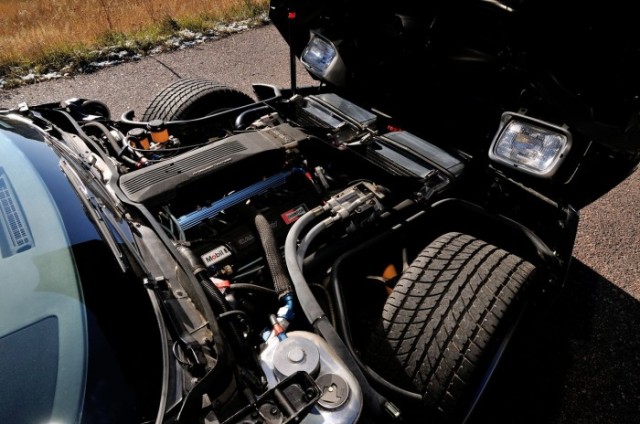 When designing the car and its powerplant, Callaway estimated that the car should reach a top speed of 252 mph, if the motor produced the expected 898 hp and 772 lb-ft of torque. Some reports indicate that the car may have produced over 900 hp, which could certainly be feasible depending on the way the car was tuned. This type of power helped push the custom C4 from a standstill to 60 mph in 3.9 seconds, and run the quarter-mile in 10.6 seconds.
When designing the car and its powerplant, Callaway estimated that the car should reach a top speed of 252 mph, if the motor produced the expected 898 hp and 772 lb-ft of torque. Some reports indicate that the car may have produced over 900 hp, which could certainly be feasible depending on the way the car was tuned. This type of power helped push the custom C4 from a standstill to 60 mph in 3.9 seconds, and run the quarter-mile in 10.6 seconds.
While having power and a lot of it is essential to achieving speeds in excess of 200 mph, the rest of the car needs to be built to support the speed and tremendous load on nearly every part of it. To ensure the Sledgehammer was able to achieve such speeds, the ride height was reduced by an inch in conjunction with receiving Koni shocks and a repositioning of the lower control arms; suspension tuning was performed by Carroll Smith. Additionally, the car would ride on a set of 17-inch Dymag wheels made of magnesium, wrapped in specially-constructed Goodyear tires built to handle the ferocious speeds.
You don’t need a Masters Degree in fluid dynamics to understand that you won’t be setting any top speed records with a delivery van, despite having a ridiculous amount of horsepower. Accordingly, Callaway knew that the Corvette would need to get a bit more “slippery” and entrusted that to Paul Deutschman and Deutschman Design to help rework the body of the car.
The new design was successful in lowering the drag coefficient, allowing for a higher top speed, but it also improved the cooling capabilities and intake volume into the motor when compared to the original C4 bodywork. This would be the first Corvette to be adorned in the Callaway’s Aerobody package, which later was available as an option on their production cars.
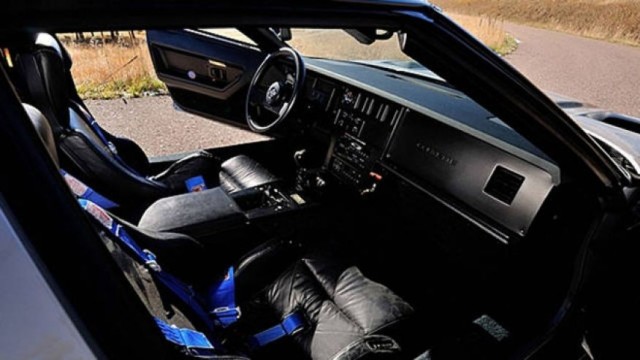 The interior did undergo a few changes once the Vette was on the Callaway anvil, but the car did maintain a majority of the factory comforts and luxuries such as: power door locks, power mirrors, power windows, A/C, Bose audio equipment, upholstery, and leather-wrapped sport seats. Callaway’s changes were geared more out of necessity than styling as they installed a complete fire suppression system and five-point harnesses for both the driver and passengers. It was all capped off by a leather-wrapped roll bar.
The interior did undergo a few changes once the Vette was on the Callaway anvil, but the car did maintain a majority of the factory comforts and luxuries such as: power door locks, power mirrors, power windows, A/C, Bose audio equipment, upholstery, and leather-wrapped sport seats. Callaway’s changes were geared more out of necessity than styling as they installed a complete fire suppression system and five-point harnesses for both the driver and passengers. It was all capped off by a leather-wrapped roll bar.
These days, most projects are carted about in secrecy inside semi-truck transports and unassuming enclosed trailers, if not built and tested completely within private facilities. While confidentiality can have its place, the team opted to simply drive the C4 to its next destination; after all, it is a car.
Ultimately, the car needed to make the trip from the Callaway headquarters in Old Lyme, Connecticut to the Transportation Research Center (TRC) in East Liberty, Ohio, designated the testing site of the project. While Callaway may have had some expectations stirring wildly in his mind, the staff at the TRC were in for a real surprise.
The Proof Is In The Pudding
As you could imagine, bright minds with the racing and engineering experience like those working with Callaway would have left very little to chance in regards to the car’s performance and consistency in testing.
Unfortunately, as anybody that has spent time developing or racing automobiles knows, you just can’t seem to plan or prepare enough to completely avoid some hiccups along the way. It didn’t take long for a few problems to arise in testing, the first of which was an engine misfire that would only reveal itself at about 135 mph. The engineering team scratched their heads as they looked through the system, but ultimately sourced the issue to a few clogged fuel injectors thanks to some bad gasoline.
There were a few other small problems that presented themselves as the speeds increased, such as an oil leak and some aerodynamic glitches. The plumbing was fixed to cure the oil leak and the aerodynamic trouble was solved on the spot with a trick made famous on the NASCAR ovals–a solid application of “racer’s tape.”
It was reported that amidst working on one of the Sledgehammer’s issues, a curious TRC employee walked over and asked, “How fast do you expect this car to go?” Nearby was Callaway Chief Engineer Tim Good, who informed them that the car was designed to exceed 250 mph. While his response received a few snickers and sounds of disbelief, it wouldn’t be long before those in doubt would be feasting on crow.
On October 26, 1988, at approximately 3:45 pm, the Callaway Sledgehammer—piloted by John Lingenfelter—earned a new closed-course world speed record of 254.76 mph.
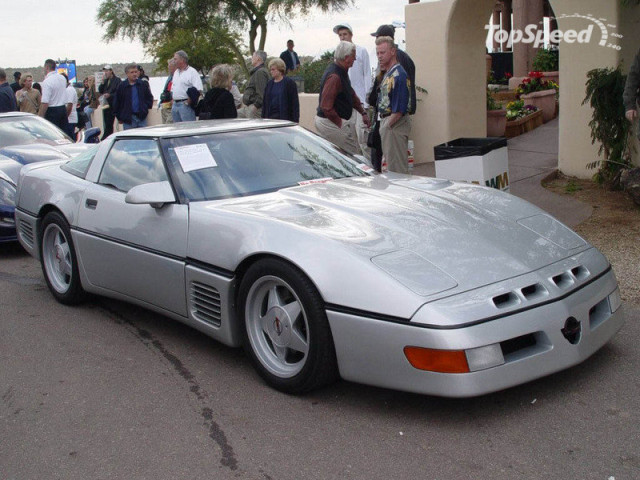 Less than 30 years has passed since the Sledgehammer earned its record, and it proudly wore the crown for 25 years. We know today that several cars have gone much faster, but we found it rather intriguing that it took 17 years of technology and development for a car to break the Sledgehammer’s record, first executed by the Bugatti Veyron at 253.8 mph.
Less than 30 years has passed since the Sledgehammer earned its record, and it proudly wore the crown for 25 years. We know today that several cars have gone much faster, but we found it rather intriguing that it took 17 years of technology and development for a car to break the Sledgehammer’s record, first executed by the Bugatti Veyron at 253.8 mph.
One year before the Sledgehammer made its debut, the Ferrari F40 claimed the title at 209 mph, only to be significantly outrun in 1993 by a car whose posters decorated the bedrooms of many young men of the era, the McLaren F1, by reaching 240 mph. Most recently the belt belongs to Bugatti’s Veyron Super Sport, that met its mechanical limit at 267.8 mph in 2010.
To be completely fair, it should be noted that all of the cars used for comparison have been factory cars, completely available to the public, though production numbers are quite small. As a result, the Sledgehammer is not listed amongst the others for “Fastest Production Car.” That being said, this was no salt flat racer; it still maintained everything the street cars had and could have very well been put into production.
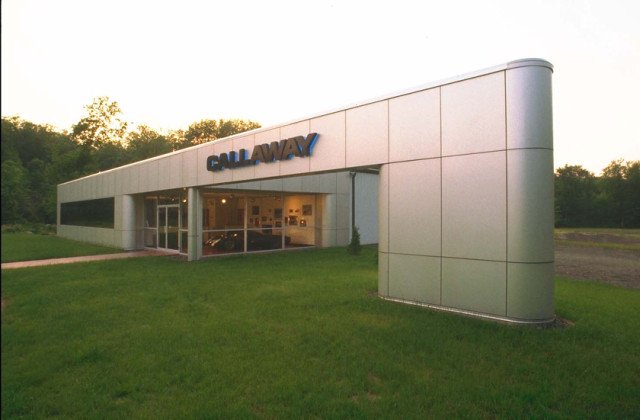 In 2004, the Sledgehammer Corvette found a new owner as it rolled across the Barrett-Jackson auction block in Scottsdale, Arizona for $221,400. The car later resurfaced a little over a year ago at Mecum’s Kissimmee auction with expectations somewhere in the $750,000 to $1,000,000 range. Unfortunately, the car was only bid up to $600,000 which was not enough to surpass the reserve. The Sledgehammer has since remained in hiding.
In 2004, the Sledgehammer Corvette found a new owner as it rolled across the Barrett-Jackson auction block in Scottsdale, Arizona for $221,400. The car later resurfaced a little over a year ago at Mecum’s Kissimmee auction with expectations somewhere in the $750,000 to $1,000,000 range. Unfortunately, the car was only bid up to $600,000 which was not enough to surpass the reserve. The Sledgehammer has since remained in hiding.
Callaway now has four separate entities or “Core Business Units” as they refer to them comprised of: Callaway Engineering, Callaway Cars, Callaway Carbon, and Callaway Competition. With three separate locations ranging from Santa Ana, California to Old Lyme, Connecticut to Leingarten Germany, Callaway will surely continue producing, as their slogan says, “powerfully engineered automobiles.”



